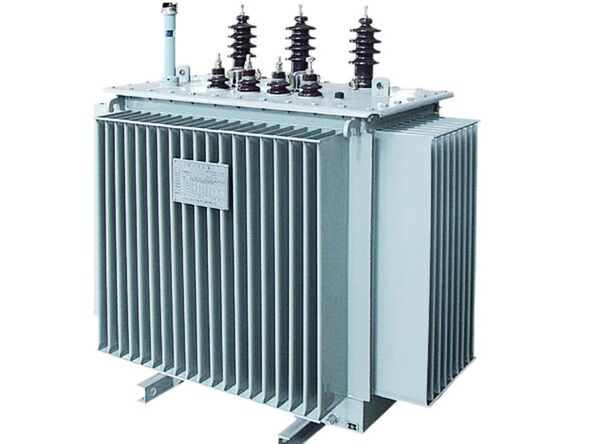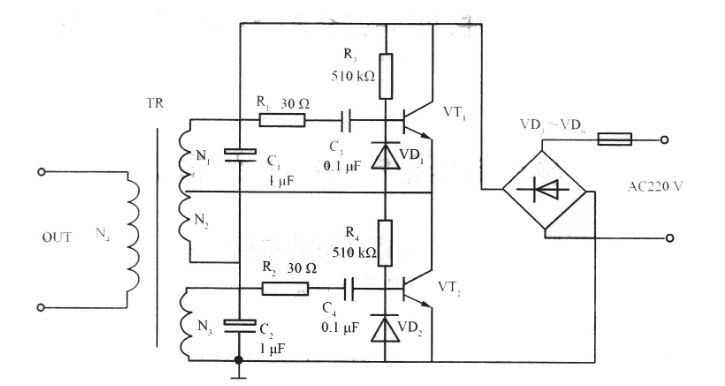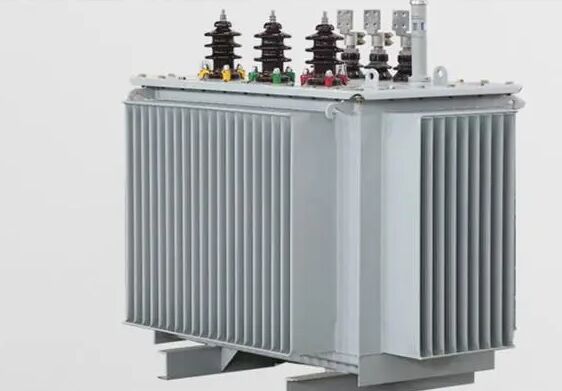In electrical equipment and wireless circuits, it is often used for raising and lowering voltage, matching impedance, safety isolation, etc. In a generator, whether the coil moves through a magnetic field or the magnetic field moves through a stationary coil, an electric potential is induced in the coil. In both cases, the value of the magnetic flux remains unchanged, but the amount of magnetic flux intersecting with the coil changes, which is the principle of mutual induction.
Ⅰ. Transformer efficiency
The efficiency of a transformer is the proportion of effective electrical energy that a transformer can convert when transferring electrical energy from one side to the other. In other words, efficiency represents the loss of the transformer during the power conversion process, that is, how much power is converted into useful output, and how much power is lost during the conversion process.
The efficiency (η) of a transformer can be calculated by the following formula:

Among them, the output electric power is the useful electric power provided by the secondary (output) side of the transformer, and the input electric power is the electric power provided by the primary (input) side of the transformer. Typically, input power minus transformer losses equals output power.
Transformer efficiency is usually expressed as a percentage. A high-efficiency transformer will convert most of the input power into useful output power, while a low-efficiency transformer will lose more energy.
Methods to improve transformer efficiency:
Optimize the operating conditions of the transformer: adjust the load and transformation ratio of the transformer according to actual needs to ensure that the transformer operates at the best operating point.
Reduce transformer losses: Reducing the transformer's iron and copper losses increases efficiency. This can be achieved through the use of high-quality materials, optimized design, and suitable cooling methods.
Regular maintenance and inspection: Regular maintenance and inspection of transformers to ensure that all parts of it are working properly will help to maintain high efficiency.
Ⅱ. Transformer manufacturing technology
1. Design: The first step in transformer manufacturing is design. In the design stage, it is necessary to determine the specifications, transformation ratio, capacity, voltage and other parameters of the transformer, as well as the selection of materials and structural layout. Designers need to consider factors such as current flow, heat distribution, losses, and cooling methods.
2. Winding manufacturing: Winding is another core part of the transformer, which is used to transmit electric energy. The winding is made of wire and is divided into primary winding and secondary winding. The manufacturing process includes winding, insulating and securing the windings.
3. Chip manufacturing: The iron core of the transformer is one of the key components for conducting magnetic flux. Chips are usually laminated from silicon steel sheets to reduce iron loss. The manufacturing process includes steps such as cutting, laminating, stacking and welding.
4. Oil immersion and insulating oil treatment: Large transformers usually use oil immersion cooling and need to be filled with insulating oil during the manufacturing process. Insulating oil not only aids in cooling but also provides additional insulation protection.
5. Painting and anti-corrosion: In order to protect the external metal parts of the transformer from oxidation and corrosion, the transformer is usually painted and anti-corrosion treated.
6. Assembly and Testing: The final stage of the manufacturing process involves assembly and testing of the transformer. The various components are assembled together, the windings are connected, and the insulating oil is filled. After the assembly is completed, various tests are performed on the transformer, including rated load test, insulation test, withstand voltage test, etc.
7. Cooling system: Large transformers usually need to be equipped with a cooling system to ensure that the temperature is within a safe range. The cooling system can be natural cooling, forced air cooling or forced water cooling.
8. Quality control: The entire manufacturing process requires strict quality control to ensure that the performance and safety of the transformer comply with standards and regulations.
9. Marking and packaging: After manufacturing is completed, the transformer needs to be marked, including manufacturer information, specifications and capacity, etc. The transformer is then packaged appropriately to protect it from damage during transportation and installation.
Ⅲ. Three transformation functions of transformer
1. Impedance transformation
Impedance transformation involves the current transformation characteristics of the transformer. When the load changes, the ratio between the output current and the input current of the transformer changes. This can be used for current control and impedance matching.
For example, when the load increases, the output current of the transformer will increase, but the input current of the transformer will only increase slightly, because the transformer can handle a larger load. This is useful in various applications in power systems, such as protecting equipment, adjusting current balance, etc.
2. Voltage transformation
Transformer conversion is one of the most basic functions of a transformer. It involves changing the magnitude of the voltage, achieved through different winding turns ratios of the transformer. The primary winding is usually connected to the power supply, while the secondary winding is connected to the load. The transformation ratio of a transformer is defined as the ratio of the secondary voltage to the primary winding voltage. If the number of turns in the secondary winding is larger, the secondary voltage is also larger, and vice versa.
This voltage conversion is widely used in power systems.
For example, transformers can boost the voltage used to transmit electricity over long distances, thereby reducing current losses on transmission lines. On the other hand, transformers also step down the voltage, making the electricity suitable for domestic and industrial use. This voltage conversion makes the transmission of electrical energy more efficient and safer.
3. Insulation transformation
Insulation transformation refers to the isolation of various parts inside the transformer by insulating materials to prevent current leakage and insulation breakdown between electrical connections. This isolation not only protects the components inside the transformer, but also increases the safety of the entire power system.
Insulation transformation is especially important in transformers because it allows circuits of different voltage levels to be connected together without causing current to flow directly. This makes energy transmission and connections between different voltage levels safer and more reliable.
Ⅳ. Common transformer applications in homes
1. Household appliances: Many household appliances, such as microwave ovens, washing machines, refrigerators, etc., may contain transformers to accommodate different voltage standards and frequencies.
2. Cell phone chargers: Cell phone chargers usually contain a small transformer that converts the high voltage from your household power supply to the lower voltage needed to charge your phone.
3. TVs and TV set-top boxes: TVs and TV set-top boxes in the home usually use transformers to adapt to their operating voltage requirements while providing insulation protection.
4. Electronic device charger: In addition to mobile phones, other electronic devices such as laptops, tablets, cameras, etc. also use transformers for charging.
5. Luminaires: Some lamps and lighting equipment may use transformers to change the voltage to achieve brightness adjustment.
6. Transformer adapter: Some devices in the home may come from other countries or regions, using different voltages and frequencies. Transformer adapters convert the mains voltage and frequency to the specifications required by the equipment.
7. Doorbell Transformer: Doorbell systems typically use low voltage, and a doorbell transformer converts the high voltage from your home power supply to a low voltage suitable for your doorbell system.
8. Low-voltage lighting system: Some homes may use low-voltage lighting systems, such as 12V or 24V lamps, which usually require the use of transformers to reduce the voltage.
9. Audio equipment: Some components in a home audio system may require the use of transformers to accommodate different supply voltages.
Ⅴ. Winding, primary side and secondary side of transformer.
1. Winding
Windings are circuit elements made up of wires or coils used to transmit electrical energy and generate magnetic fields. In a transformer, there are two main windings: primary and secondary. The primary winding usually has more turns and is used to connect to the input supply, while the secondary winding usually has fewer turns and is connected to the output load.
The number of turns and the connection method of the winding determine the transformation ratio of the transformer, thereby determining the conversion relationship between voltage and current.
2. Original edge
The primary side refers to the main winding of the transformer, also known as the input side. When power is input from the power source to the transformer, it is applied on the primary side.
The voltage and current of the power supply pass through the primary winding, generating a strong magnetic field. This magnetic field will propagate through the iron core to the secondary winding, thereby causing the transformation of electrical energy. The characteristics of the primary winding determine the rated voltage and current of the transformer.
3. Secondary side
Secondary refers to the secondary winding of the transformer, also known as the output side. The secondary winding is connected to the load, and through the function of the converter, the voltage or current input from the primary side is converted into a voltage or current suitable for the load.
The transformation ratio of a transformer determines the ratio of voltage and current between the primary and secondary sides. The characteristics of the secondary side can be designed according to the load requirements to provide the required output voltage and current.
Ⅵ. Liquid insulation medium of transformer
1. Dry insulation
Dry insulation is an insulation system that does not use a liquid insulating medium and usually uses dry insulation materials. These materials can be special insulating paper, resin or composite materials.
The functions of dry insulation include:
Applicability: Dry insulation is suitable for some special environments, such as indoor applications or scenes where liquid leakage needs to be prevented.
Environmentally friendly: Dry insulation does not require the use of liquid insulating oil, thus reducing environmental pollution and the problem of liquid waste disposal.
Safety: Not using liquid insulating media reduces the risk of fire and explosion.
2. Transformer oil
Transformer oil is an insulating medium, usually mineral oil or silicone oil, used to fill the windings and cooling systems of transformers.
The functions of transformer oil are as follows:
Insulating oil testing: The dielectric strength of transformer oil can be measured through specific tests to ensure the normal insulation performance of the transformer.
Insulation: Transformer oil has good electrical insulation properties and can isolate windings and other electrical components to prevent arcing and insulation breakdown.
Anti-corrosion: Transformer oil is anti-corrosive and protects internal metal parts from oxidation and corrosion.
Cooling: Transformer oil can transfer heat in the windings and core, helping to dissipate the generated heat to the external environment, thereby maintaining the normal operating temperature of the transformer.
Ⅶ. The relationship between the short-circuit impedance of the transformer and the short-circuit capacity of the power system.
The short-circuit impedance of a transformer refers to the combination of equivalent resistance and reactance between the primary and secondary sides of the transformer under short-circuit conditions. It is an important electrical parameter that describes the current that a transformer can supply in the event of a short circuit fault. Short circuit impedance is usually expressed as a percentage or nominal value.
The short-circuit impedance of a transformer is actually the internal electrical characteristics of the transformer, which determines the amount of short-circuit current drawn from the transformer during a short-circuit fault. The greater the short-circuit impedance, the smaller the short-circuit current provided by the transformer.
Related to the short-circuit capacity of the power system, there is a close relationship between the short-circuit impedance of the transformer and the short-circuit capacity of the power system. The short-circuit capacity of the power system refers to the maximum current that the power system can provide in a short-circuit state, which affects the stability of the power system and the protection of equipment. The short-circuit impedance of the transformer directly affects the size of the system short-circuit current.
When the short-circuit capacity of the system is much greater than the short-circuit impedance of the transformer, the short-circuit current of the transformer is relatively small and the stability of the system is high. However, if the short-circuit impedance of the transformer is much greater than the short-circuit capacity of the system, this may cause the transformer to withstand excessive current in the event of a short-circuit fault, which may cause damage to the transformer.
Ⅷ.The role of no-load loss and short-circuit loss in transformer performance.
1. No-load loss
The no-load loss is mainly caused by the core hysteresis loss and core eddy current loss of the transformer. Even when no load is connected, the transformer's core still periodically magnetizes and demagnetizes, causing energy losses.
No-load losses mainly affect the efficiency of the transformer. Although no-load losses usually constitute a small proportion of the total losses, they accumulate during continuous operation of the transformer, resulting in additional energy consumption. No-load losses will also cause the transformer to generate heat, which may affect the temperature rise and life of the transformer.
2. Short circuit loss
Short circuit losses are mainly caused by the resistance within the transformer windings. When the transformer is subjected to a short circuit with rated current, the current flowing in the winding will cause certain resistance losses.
Short circuit losses affect the load capacity and stability of the transformer. High short-circuit losses result in additional heat generation at rated current, which may limit the transformer's overload capability. In the event of a short circuit fault, short circuit losses will affect the thermal rise of the transformer.
3. The impact of no-load loss and short-circuit loss on the performance and operating status of the transformer.
Efficiency: No-load losses and short-circuit losses both cause energy losses and thus affect the efficiency of the transformer. High losses cause the overall efficiency of the transformer to decrease, requiring more input power to maintain normal operation.
Load Capacity: Short-circuit losses particularly affect the load capacity of the transformer. Excessive short-circuit losses will cause additional heat rise, limiting the transformer's ability to continue operating at rated current.
Thermal heating: No-load losses and short-circuit losses will generate heat, which may cause the transformer to heat up. Continued heating may affect transformer performance and life.
Ⅸ.Rated capacity of transformer.
The rated capacity of a transformer refers to the maximum power output that the transformer can operate continuously under certain conditions. Usually expressed in kilowatts (kVA). The rated capacity of a transformer is determined during the design and manufacturing process and depends on factors such as the transformer's design parameters, number of winding turns, materials, and cooling methods.
The rated capacity reflects the performance and working ability of the transformer under rated conditions. The rated capacity is very important for the selection, installation and operation of the transformer because it affects the load capacity and efficiency of the transformer and is also related to the cost and size of the transformer.
Affecting the use of transformers:
1. Life and reliability: Operating within the rated capacity can reduce the thermal rise of the transformer and prolong the life of the transformer. At the same time, overload operation may cause equipment overheating, accelerate insulation aging, and reduce reliability.
2. Load adaptability: The rated capacity of the transformer determines the maximum load it can bear. If the rated capacity is exceeded, the transformer may overheat, affecting operational stability or even being damaged. Therefore, when selecting a transformer, it is necessary to ensure that the rated capacity of the transformer is sufficient according to the actual load demand.
3. Efficiency: The transformer can usually achieve the best efficiency under the rated capacity. When working near the rated capacity, the loss of the transformer is relatively low and the efficiency is high. Exceeding the rated capacity may result in increased energy loss and reduced efficiency.
4. Cost: The rated capacity of a transformer directly affects its manufacturing cost and size. Higher rated capacities may require more material and manufacturing costs, and may also require larger physical dimensions.







